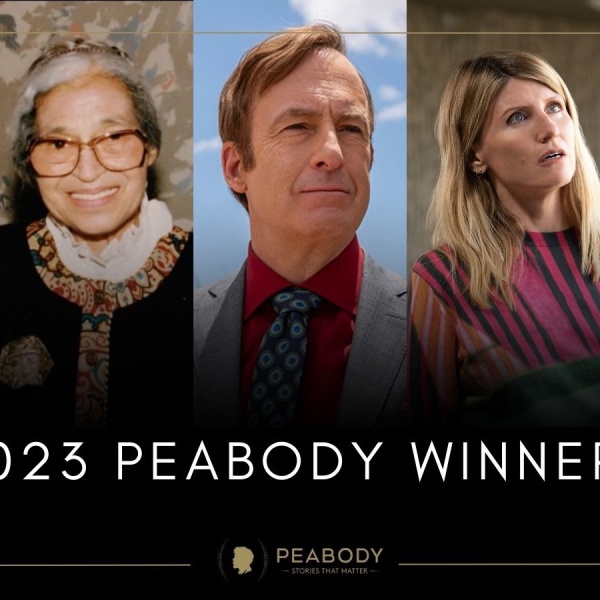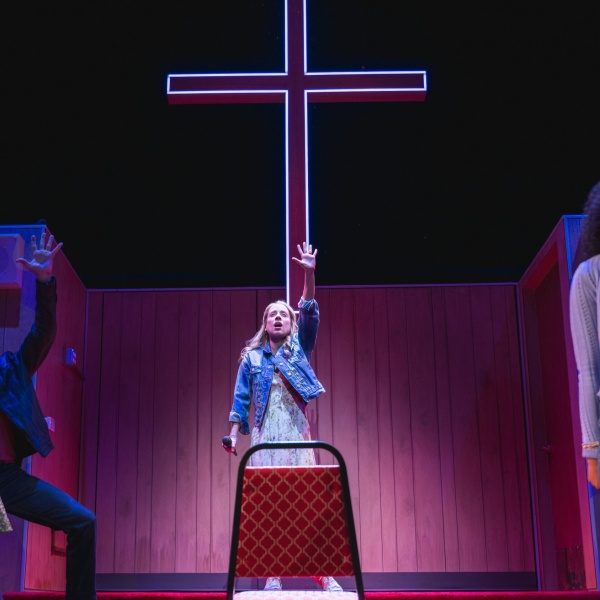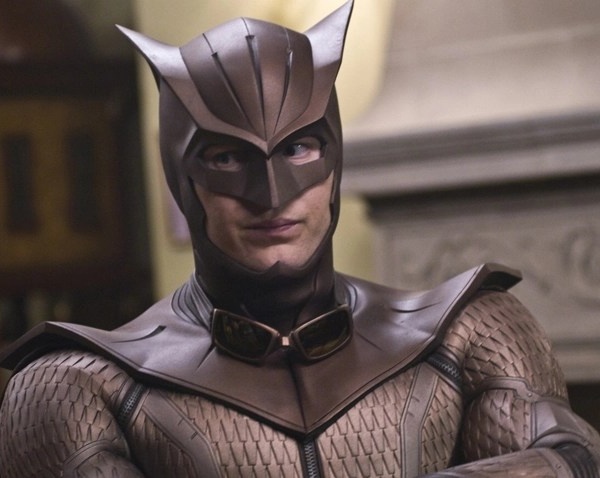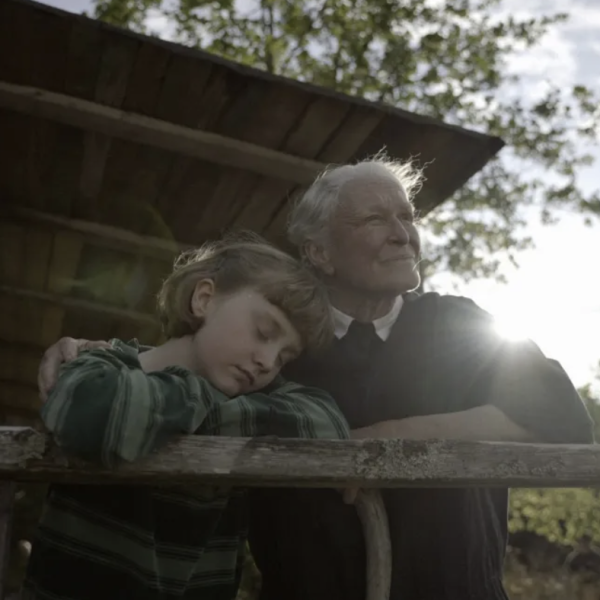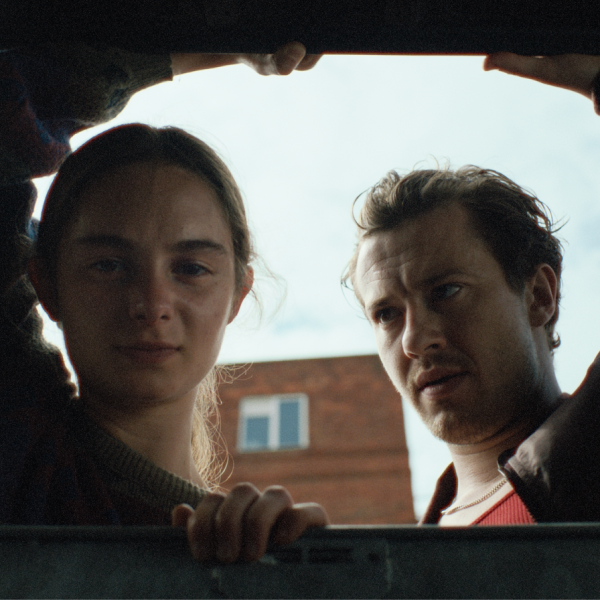
It’s strange to think that Gore Verbinski, an accomplished visual stylist who began in commercials (he was responsible for those “Bud-weis-er” talking bullfrog ads), would want to follow up the daunting and problem-plagued back-to-back shoots of the two latter ‘Pirates of the Caribbean‘ movies with an animated film. Not only are animated films notoriously time-consuming and hard to crack, but this would be his first fully animated film and the debut feature film from Industrial Light & Magic, George Lucas‘ wizardly visual effects house. And this was supposed to be his “small” movie.
Thankfully, the “smallness” Verbinski was going for isn’t apparent in the final film. “Rango,” which stars Johnny Depp as a chameleon suffering from a profound identity crisis, is a sprawling, whirligig animated contraption that is oversized in every way – thematically, narratively, visually. But never does the movie feel overstuffed or manic, with long, ambient chunks of deep contemplation. In short: it’s the weirdest, most gorgeously realized animated film in recent memory. And it blows into the Cineplex like a Western gust of fresh air, making other animated fare (“Gnomeo and Juliet,” we’re looking in your direction) tame and flavorless in comparison.

After a brief title sequence, in which a trio of mariachi owls addresses the audience and sets things up grimly (our hero is destined to die), we meet the title character: Rango (Depp) is a chameleon in a terrarium, acting out imaginary scenarios that make the toys in Bonnie’s room (in “Toy Story 3“) seem like community theater day players. He’s looking for meaning, a character in search of character, asking the big questions, when an accident (told, breathlessly, in the style of recent Robert Zemeckis motion capture joints, but without the cold-eyed roboticism) leaves him stranded in the Mojave desert. He’s alone and dying of thirst, eventually stumbling across the dusty frontier town of Dirt, populated by various arid creatures (tarantulas, horny toads, gila monsters, etc.).
Rango, with his crooked neck bent into a zigzag (or maybe it’s a question-mark), sees the opportunity to reinvent himself, and he does: instead of a pampered pet, he’s now a storied gunslinger, able to take down seven goons with a single bullet. The townspeople, whose water supply has been dwindling, is looking for optimism. In Rango they see a hero; their salvation. And Rango tries to live up to their assumption, even if he is prone to flights-of-fancy and a goony naïveté. There’s never anything to suggest that Rango is trying to take advantage of the weary townfolk and his enthusiasm is charming, not predatory.
Visually, the movie is ravishing. It’s apparent from the film’s earliest moments, which linger on our hero’s face far longer than you’d expect (especially since the movie isn’t in 3D), but once we reach the town, populated by its bevy of creature, your eyes become very much in danger of jumping right out of your skull.
There’s a kind of tactile richness that permeates every frame, along with beautiful, naturalistic sequences (Roger Deakins advised the production) that bring to mind everyone from Hayao Miyazaki to Terrence Malick (along with the easier-to-spot odes to Akira Kurosawa and Sergio Leone). ILM does a killer job of creating both characters and environments that feel 100% authentic, even if they are peppered with a kind of sweet surrealism. In one memorable dream sequence, Rango imagines himself in a stark white background, menaced by cacti that turn into rattlesnake rattles. It’s startling, invigorating stuff.
But back to the story (written, incidentally, by John Logan, who has been responsible for everything from “Gladiator” to “Star Trek: Nemesis“): The mayor of Dirt, a wheelchair-bound tortoise (Ned Beatty), seizes upon the townspeople’s enthusiasm for the supposed gunslinger and makes Rango the town’s sheriff, a role he’s more than happy to accept, given how sleepy the town is. What Rango doesn’t realize, of course, is that there’s a vast, “Chinatown“-like conspiracy afoot with the town’s water, and he’ll have to become an actual hero if he wants to save the day and get the girl (Beans, a desert iguana played by Isla Fisher).
What makes “Rango” such a blast is the seriousness with which Verbinski takes the western conceit – there isn’t a whole lot of winking and nodding, but actual, threatening cowboy stuff is in abundance. There are references, for sure, but they’re handled wittily and are wonderfully not of-the-moment – during one thrilling action sequence, wherein our heroes are menaced by bandits riding bats, there somehow manages to be a gag that tips its hat to both “Apocalypse Now” and “Deliverance” in the same moment. That’s when we wanted to stand up and applaud the gutsy go-for-broke-ness of the movie. (Even if the little kids in our screening were noticeably freaked out.)
The main complaint that will undoubtedly be leveled at the film is that it doesn’t have a whole lot of “heart.” This isn’t “Toy Story 3” or even “How to Train Your Dragon” in terms of emotional involvement. It’s a visual feast, for sure, and an exciting, sometimes hilarious adventure, but there isn’t anything that will give you a lump in your throat. But the movie can never be classified as “cold.” “Rango” is certainly cerebral, with large, dialogue-free stretches in which our hero simply ponders the nature of his existence, but it never feels like an intellectual exercise. It’s too jaunty and exciting and feisty to ever become self-involved or distancing; you’re sucked in from the beginning and are rarely given the opportunity to let go.
Verbinski, working in the same bizarro wheelhouse as bits of the third ‘Pirates of the Caribbean’ movie (specifically the earlier sequences set in the nether-realm), brings a wit and verve to the movie that cannot be contained. Maybe it’s the fearlessness of it being his first animated film, coupled with the exhilaration of being able to work with Industrial Light & Magic on a full-length movie (their work is nothing short of magnificent), but it really does genuinely feel like something new. It’s easily the strangest large-scale animated movie since Wes Anderson‘s stop motion gem “Fantastic Mr. Fox,” and probably even weirder. It’s funny that a meta-western about what identity means to a creature supposed to genetically blend in anywhere, stands so boldly apart from the crowd. [B+]
